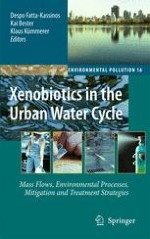2010 | OriginalPaper | Chapter
9. Metabolic and Co-metabolic Degradation of Industrially Important Chlorinated Organics Under Aerobic Conditions
Authors : Ferhan Çeçen, Bilge Alpaslan Kocamemi, Özgür Aktaş
Published in: Xenobiotics in the Urban Water Cycle
Publisher: Springer Netherlands
Activate our intelligent search to find suitable subject content or patents.
Select sections of text to find matching patents with Artificial Intelligence. powered by
Select sections of text to find additional relevant content using AI-assisted search. powered by
